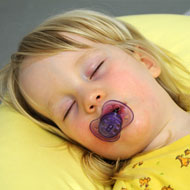What are the Signs & Treatments For Febrile Seizure in Toddlers
To put it in a simplistic way, a seizure is caused on account of a multitude of nerve cells firing off an electrical charge. While these tiny electrical impulses are usually normal and are the way in which these millions of cells communicate, a simultaneous intense wave of electricity is too much for the brain to take.
Thus you have the symptoms of a seizure including twitching, falling unconscious and other irregular behavior. What people need to appreciate is that there is no one simple kind of seizure, but multiple varieties, for instance, you have febrile Seizures in toddlers and infants.
Signs of Febrile Seizures in Toddlers
A febrile seizure in toddlers is not so uncommon since from 6 months all the way until 5 years, it is estimated that about 3 to 5 out of a 100 children will experience this kind of seizure. This seizure essentially refers to a convulsion which is brought on by your toddler having a fever. In the event of a febrile seizure, the toddlers might throw up, they might begin to drool or their eyes may roll. The bodily twitching which is common to many seizures might also take place. The toddler’s limbs will possibly become quite still. Losing consciousness is one of the signs of some seizures and may also occur. As for the duration of these febrile seizures, one might have to deal with them for as little as a few seconds to as long as a quarter of an hour. If you see febrile seizure in toddlers, an emergency call should be placed if these seem to continue for more than a couple of minutes.
Treating Febrile Seizures in Toddlers
At the same time, one should not panic as febrile seizures in toddlers are typically not harmful and the child can appear perfectly normal after an episode or he or she could feel rather sleepy. If you witness a febrile seizure, the child has to be turned such that his body and head are turned to one side. You can then loosen any sort of constricting garments. His or her mouth and air passages need to be clear. You should also call emergency services if the toddler changes color (appears blue) or seems to struggle to breathe. It helps to jot down the duration of this fever seizure in order to tell your doctor after the episode. Once it passes, you should get in touch with your toddler’s doctor to try and determine the cause of the fever.


